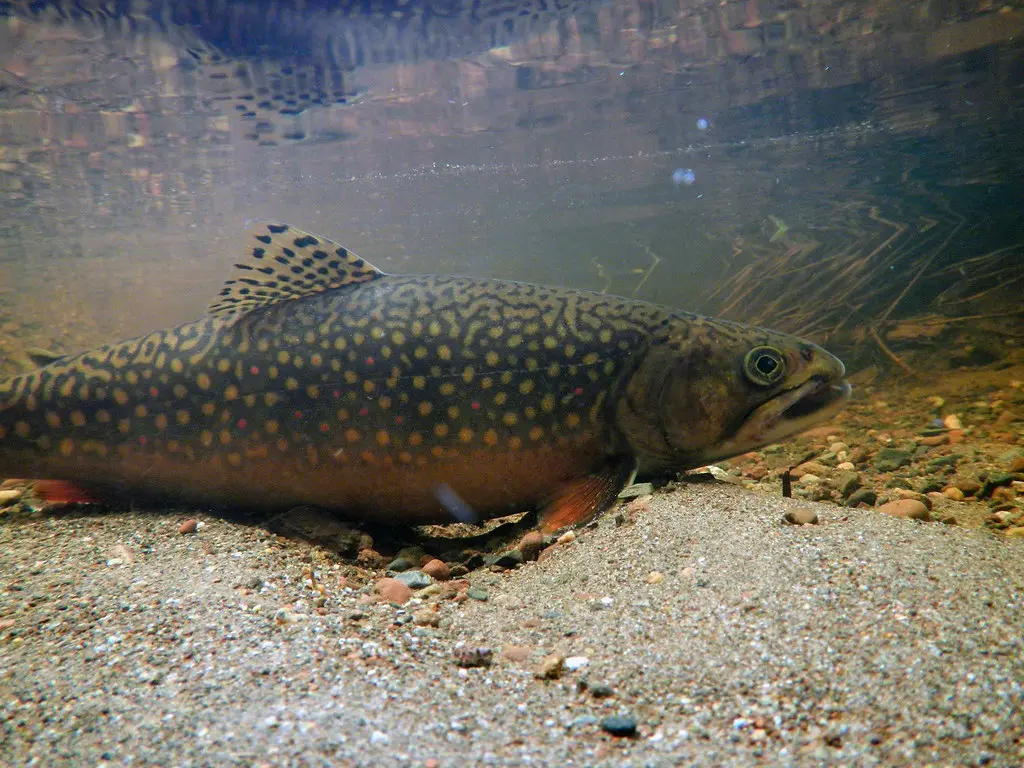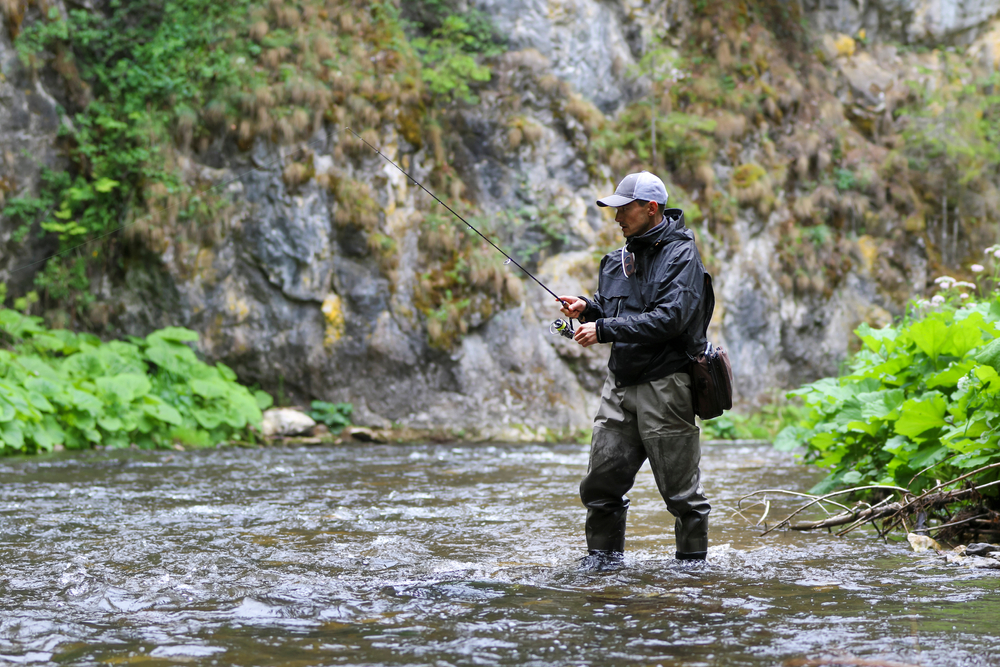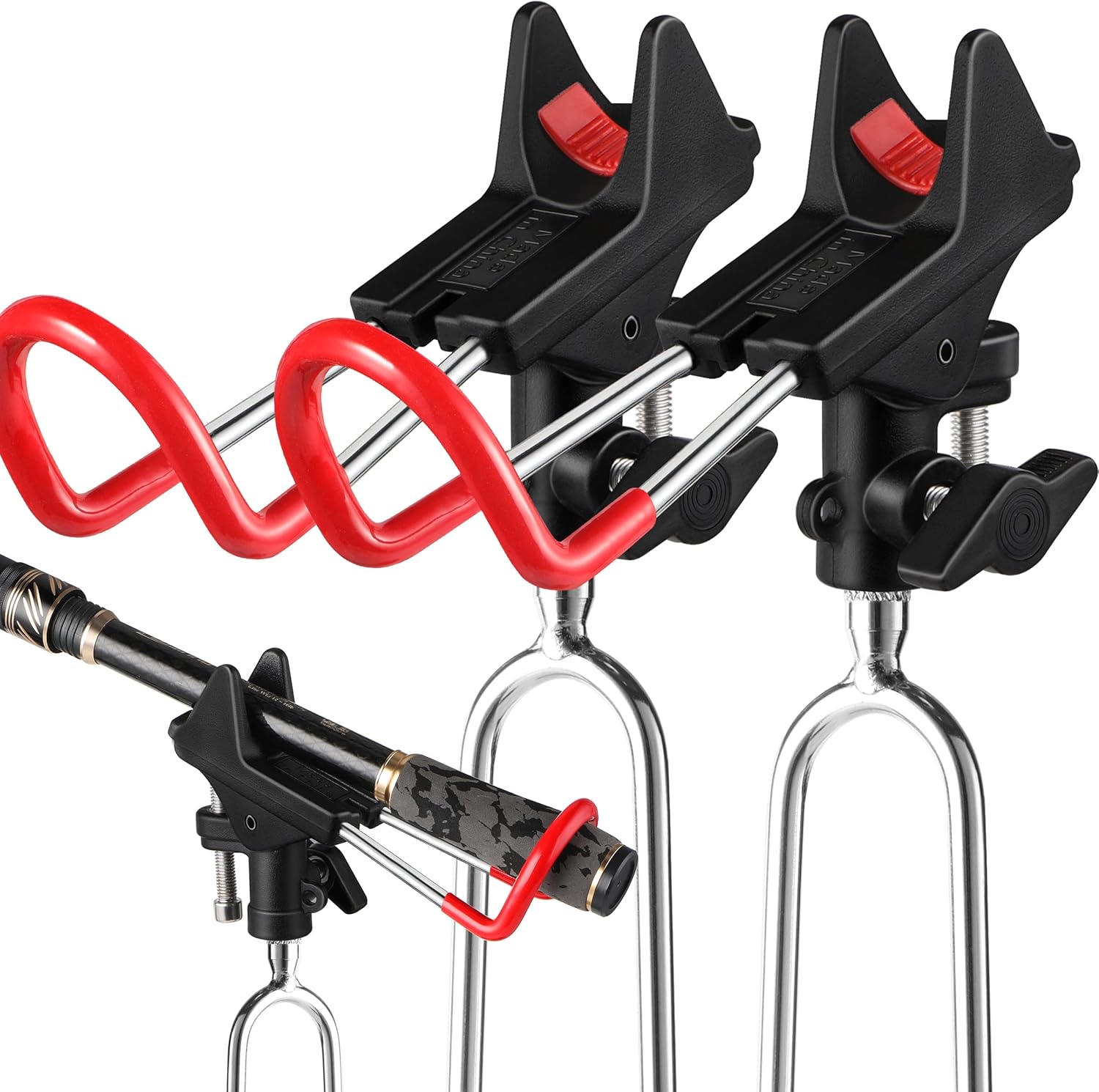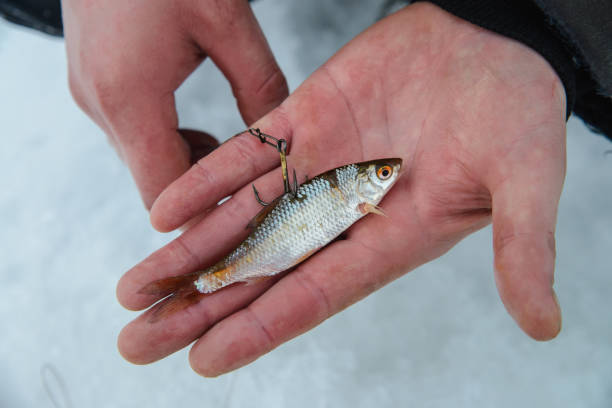
Summer Trout Fishing. Cracking the Code When Waters Warm

12 min read
The alarm blares at 4:30 AM. It’s already 72 degrees outside. By noon, it’ll push 90. Most anglers have written off trout fishing until fall, but you know better. The summer trout game isn’t impossible—it’s just different.
I learned this lesson the hard way years ago on a small Pennsylvania stream. The calendar said July, the thermometer read 88 degrees, and conventional wisdom said to leave the trout alone. But an old-timer I met at the local fly shop told me something I’ll never forget: “Summer doesn’t mean no trout. It just means smarter trout.”
Following his advice, I caught and released seven beautiful wild browns that day, including a 19-incher that still ranks among my personal bests. The experience transformed how I approach warm-weather trout fishing forever.
Understanding Summer Trout Behavior
Let’s get something straight right away—trout are cold-water creatures. Their metabolism, oxygen requirements, and overall behavior are optimized for cooler water. When temperatures climb, their world changes dramatically:
- Metabolism increases, burning more energy and oxygen
- Available oxygen in the water decreases
- Feeding patterns shift to conserve energy
- Trout relocate to thermal refuges and oxygen-rich areas
A trout’s ideal temperature range is roughly 50-65°F (10-18°C). Push much beyond that upper limit, and they become stressed. Above 70°F (21°C), many trout species begin to struggle, particularly wild and native populations.
But here’s the thing—trout are survivors. They’ve evolved strategies to handle seasonal temperature swings, and understanding these strategies is your ticket to summer success.
Timing Is Everything
In summer, when to fish becomes just as important as where and how. The daily temperature cycle creates distinct windows of opportunity:
Dawn Patrol: The absolute golden hour(s) for summer trout. Water temperatures are at their lowest, oxygen levels are highest, and trout are often actively feeding after the cool night. I can’t emphasize this enough—if you can only fish one period during summer, make it the first light of day.
Evening Shift: As the sun drops and temperatures begin to fall, trout often become active again. This window typically starts in the last hour before sunset and can extend well into dusk.
Night Moves: For the dedicated angler, night fishing can produce exceptional results, particularly for larger brown trout. Nocturnal feeding activity increases significantly in summer, especially around the full moon period.
Avoid Mid-Day: From roughly 11 AM to 4 PM, most trout waters become too warm and bright for quality fishing. Unless you’re targeting specifically cold water sources (more on that shortly), this is the time to take a break, scout new locations, or tie flies back at camp.
During a scorching July trip to Montana’s Madison River, I watched dozens of anglers struggle throughout the heat of the day. Meanwhile, my buddy and I fished from 5-9 AM, napped during the afternoon, then returned for the 7-10 PM window. The result? We caught and released over 30 quality trout while watching others battle heat and frustration for minimal returns.
Finding Summer Trout Hideouts
When water temperatures climb, trout don’t just get lethargic—they relocate. Understanding where they go is half the summer battle. Here are the prime locations to target:
Spring Seeps: Natural cold-water springs creating thermal refuges are absolute gold mines. These areas might be only slightly cooler than surrounding water, but that’s enough to concentrate trout. Look for slightly cloudy water emerging from stream banks or bottomlands.
Deep Pools: Particularly those with significant depth (3+ feet), shade, and good flow. The deeper water maintains cooler temperatures longer than shallow runs.
Highly Oxygenated Water: Riffles, small waterfalls, and areas with turbulent flow incorporate oxygen into the water. During summer, trout will often hold in or just downstream of these oxygen-rich zones.
Tributary Confluences: Where smaller, cooler streams enter larger waterways, creating temperature breaks that attract trout. Sometimes these confluences form obvious mixing zones you can actually feel when wading.
Dam Tailwaters: Many dams release water from the bottom of reservoirs, providing consistently cool flows even during the hottest months. These tailwaters can offer exceptional summer fishing when other waters struggle.
I’ll never forget discovering a tiny spring creek that entered my favorite river. It was barely noticeable—just a foot wide—but the slightly cloudy water signaled cold groundwater. Within ten feet of that confluence, I caught five gorgeous rainbow trout when the main river was seemingly devoid of life.
The Elevation Advantage
For those willing to hike, higher elevations offer natural air conditioning for both anglers and trout. With every thousand feet of elevation gain, you’ll typically find water temperatures 3-5 degrees cooler than lowland areas.
Small mountain streams that might seem insignificant during spring can become prime summer targets. These waters often hold native brook trout or small wild browns that are eager to take dry flies even when their lowland cousins have gone deep and sulky.
Last August, while temperatures hit 95 degrees in the valley, I hiked four miles to a mountain stream at 8,000 feet elevation. The air temperature was a comfortable 75, the water was a perfect 58 degrees, and native cutthroat trout rose to nearly every well-presented fly. Sometimes the best summer fishing strategy is simply gaining elevation.
Summer Trout Tactics: Adjust Your Approach

Successful summer trout fishing demands adjustments to your standard techniques:
Downsize Everything
When water warms, trout get pickier. Reduce your:
- Tippet size (consider 5X to 7X)
- Fly or lure size (go 1-2 sizes smaller than spring)
- Profile and action (more subtle presentations)
- Hook size (smaller profile, less weight)
I was struggling one August morning until a guide friend looked at my rig and simply said, “Cut that thing in half.” I switched from a #14 stimulator to a #18 beetle pattern and immediately started catching fish.
Go Deep or Go Home
When surface temperatures climb above 65°F, focus on getting your presentation into deeper, cooler water:
- Weighted nymphs and streamers
- Split shot to get down quickly
- Longer leaders for nymphing
- Focus on the deepest sections of pools
Exception: During the early morning or evening “magic hours,” surface activity can still be excellent, particularly with terrestrial insects.
The Need for Speed (Control)
Retrieve speed becomes critical in summer. Generally, you’ll want to:
- Slow down presentations in warm water
- Allow more drift time for nymphs
- Give trout extra time to commit
- Make multiple casts to promising areas
However—and this is crucial—sometimes an erratic, fast retrieve will trigger reaction strikes from otherwise inactive fish. If the slow approach isn’t working after thorough testing, try something radically different.
Light and Shadow Games
Summer sunshine creates harsh light conditions that make trout warier than usual:
- Position yourself to avoid casting shadows over feeding lanes
- Use the sun to your advantage by fishing into shaded areas
- Consider polarized sunglasses absolutely essential for spotting fish
- In small streams, approach from downstream when possible
During a particularly bright day on a limestone creek, I caught several nice browns by deliberately casting into the shadows beneath overhanging trees. The fish were practically invisible until they moved to take the fly.
Summer Fly Selection: Match the Season
Your fly box needs a seasonal adjustment when summer arrives:
Terrestrial Patterns: Ants, beetles, hoppers, and crickets become primary food sources as summer progresses. I never hit summer trout water without a good selection of terrestrials, especially small (#16-20) black ants and beetles.
Midges: These tiny insects hatch year-round but become proportionally more important during summer. Having #18-22 midge patterns in both larval and adult forms can save tough days.
Attractor Patterns: When specific hatches are sparse, attractor patterns like Stimulators, Humpies, and Royal Wulffs can produce strikes from opportunistic fish, especially in faster pocket water.
Mouse Patterns: For night fishing, especially for big browns, mouse patterns can produce explosive strikes. This approach isn’t for numbers but can connect you with the fish of a lifetime.
One July evening on a popular Colorado river, hundreds of tiny flying ants fell onto the water, creating a feeding frenzy among trout that had been inactive all day. Having a few #20 flying ant patterns in my box turned a fishless day into an unforgettable session. Preparation meets opportunity.
Spin Fishing Adaptations for Summer Trout
Not strictly a fly angler? No problem. Spin fishing for summer trout requires similar adjustments:
Downsize Your Hardware: Smaller spinners (#0 and #1), tiny spoons, and micro jigs match the more selective feeding habits of summer trout.
Add Weight Strategically: Getting small lures deep without spooking fish is the challenge. Consider tungsten putty or small split shot placed 12-18 inches above your lure.
Slow Your Retrieve: Give trout more time to decide with a stop-and-go retrieve rather than a constant motion.
Try Soft Plastics: 1-2 inch soft plastic minnows, worms, or nymphs on small jigheads can be deadly when fished deep and slow.
My friend Mark, a dedicated hardware guy, outfishes many fly anglers during summer by using 1/64 oz marabou jigs in black or olive. He dead-drifts them through deep runs just like a nymph, occasionally giving tiny twitches. His approach perfectly matches the subtle feeding preferences of summer trout.
The Temperature Decision: When to Call It

Being an ethical angler means knowing when to quit. Trout caught in water above 67-68°F experience significantly higher stress and delayed mortality, even with careful catch-and-release practices.
I carry a stream thermometer in summer and follow this simple guideline:
- Below 65°F: Fish normally with confidence
- 65-67°F: Fish with extra care, minimize fighting time
- 68°F and above: Find cooler water or call it a day
Remember, it’s not just about what’s legal—it’s about what’s right for the resource. I’ve walked away from feeding fish many times when temperatures climbed too high. There’s always another day, but only if we protect the fishery.
Handling Summer Trout: Quick and Wet
If you do catch trout during warm conditions, proper handling becomes even more crucial:
- Land fish quickly to reduce stress and oxygen depletion
- Keep them in the water while removing hooks
- Wet your hands before touching them
- Support their weight horizontally
- Allow recovery time before release, facing them into current
I’ve started carrying a small thermometer with oxygen saturation measurement capability. It’s taught me that even water that feels cool can sometimes have surprisingly low oxygen levels during summer, making quick releases even more important.
Gear Adaptations for Summer Success

Beyond techniques, consider these gear adjustments for summer trout fishing:
Longer, Lighter Rods: A 9-foot 3-or-4-weight rod gives you better line control for delicate presentations and keeping more line off the water.
Breathable Waders or Wet Wading: Full waders in summer can be miserable and potentially dangerous. Consider wet wading with quick-dry pants and wading boots, or ultralight breathable waders.
Sun Protection: A quality hat, neck gaiter, and sun gloves aren’t just comfort items—they’re essential safety gear. Sunburn and heat exhaustion can end your trip faster than a lack of fish.
Hydration System: Whether it’s a wading belt water bottle holder or a backpack hydration system, staying hydrated is critical for summer fishing stamina.
My summer kit has evolved to include a sling pack with built-in water reservoir, lightweight wading sandals, and UV-protective clothing. The comfort difference is remarkable compared to my earlier days of sweating in neoprene waders and cotton t-shirts.
Alternative Summer Trout Opportunities
When stream fishing becomes difficult, consider these alternatives:
High Mountain Lakes: Alpine and subalpine lakes maintain cooler temperatures through summer and often feature eager trout populations. The hike in acts as a natural limit on fishing pressure.
Night Fishing: Legal in many (but not all) waters, night fishing can connect you with the largest trout of the year during summer months. Black or dark purple streamers and mouse patterns excel.
Warmwater Species: When trout fishing isn’t viable, consider redirecting to smallmouth bass, panfish, or other species that thrive in warmer conditions. The skills transfer nicely.
Last summer, during a brutal heatwave, I shifted from my beloved trout streams to smallmouth bass in the same watershed. The fishing was exceptional, and I discovered techniques that later improved my trout fishing when conditions cooled.
The Psychological Edge: Patience and Observation
Perhaps the most important summer trout fishing skill is patience. Hot-weather fishing rewards those who slow down, observe more, and cast less. Before making your first cast:
- Sit and watch the water for rising fish
- Look for feeding lanes and current seams
- Check for insect activity on nearby vegetation
- Consider water temperature and oxygen levels
The best summer trout anglers I know spend more time observing than fishing. They make fewer casts but connect with more fish because each presentation is informed by careful observation.
Planning Your Summer Trout Adventure
To maximize summer trout success, consider these planning strategies:
Research Water Temperatures: Historical temperature data for many rivers is available online. Target waters known for maintaining cooler summer temperatures.
Consider Geography: North-facing canyons, higher elevations, and spring-fed systems maintain better conditions longer into summer.
Flexibility Is Key: Have backup plans for different conditions. If your primary stream is too warm, know where the nearest tailwater, high lake, or spring creek is located.
Multi-Day Strategy: For multi-day trips, plan around weather patterns. After a cold front passes can be prime time for summer trout.
When planning a week-long summer trip to Yellowstone, I researched average water temperatures for a dozen streams and created a decision tree based on conditions. When we arrived to find the Lamar River running warm, we immediately pivoted to higher-elevation tributaries and had spectacular fishing while others struggled.
Final Thoughts: The Summer Trout Mindset
Summer trout fishing requires a mental shift. It’s not about numbers—it’s about the quality of the experience and the challenge of adapting to tough conditions. Some of my most memorable trout have come during the dog days of summer precisely because they required more skill, patience, and knowledge to catch.
As my old mentor used to say, “Anyone can catch trout in May. It takes a real angler to find them in August.”
So while the masses are complaining about the heat or waiting for fall, you’ll be rising at dawn, seeking out cool water, making delicate presentations, and connecting with trout that rarely see flies during summer months. The rewards—both in fish caught and knowledge gained—will transform your approach to trout fishing year-round.
After all, the skills that make you successful during summer’s challenging conditions will make you absolutely deadly when easier seasons return.


